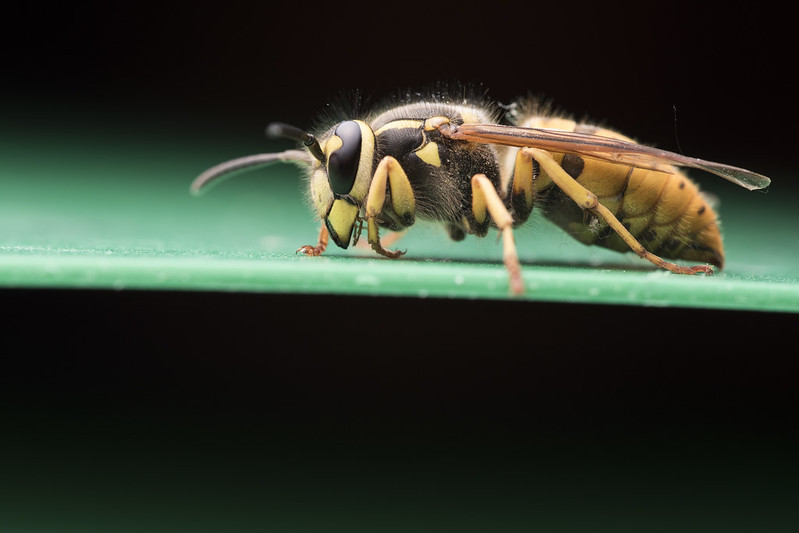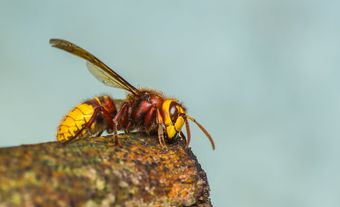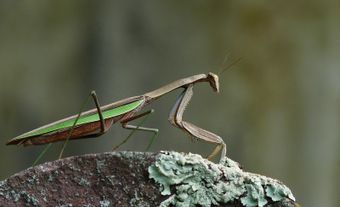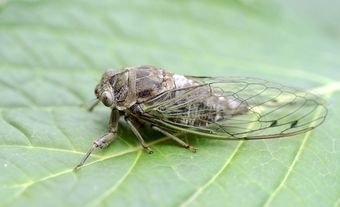
Description
Yellowjackets are strikingly coloured wasps, with contrasting black and yellow or white markings. Some species also have reddish markings. Female yellowjackets belong to one of two castes: queens or workers. Queens are larger than workers, with an especially large gaster (or abdomen). Male yellowjackets are smaller than females and have longer antennae.
Is it a yellowjacket, hornet or bee?
Wasp is a general term used to refer to most of the insects in the order Hymenoptera. Wasps, bees and ants all have a narrow “waist” or constriction near the base of their abdomen. Most wasps are parasitoids that lay their eggs on or inside the bodies of other insects, which makes them beneficial predators of many pest insects. However, for many people the word wasp is mainly associated with brightly coloured yellow-and-black stinging wasps, especially yellowjackets and hornets. Yellowjackets are often mistakenly called bees, but bees can usually be recognized by their densely hairy bodies. Yellowjackets and hornets have less conspicuous and relatively few hairs in comparison. Canada’s single established hornet species, the European hornet, is larger and bulkier than any yellowjackets in the country, and has reddish markings on the head and thorax.
Distribution and Habitat
Yellowjackets are native to North America, Europe, Northern Africa and East Asia, although some species have been introduced outside their native range. Most species of yellowjackets live in woodlands, away from human environments. Yellowjackets can be found throughout Canada, except in the far north. A few species, such as Vespula intermedia and Dolichovespula albida, have ranges that extend into Nunavut and the Northwest Territories.

Nests
Yellowjacket nests are round, greyish paper structures made from a mixture of chewed-up plant fibres, water and saliva. The nest consists of multiple layers of egg-carton-like paper comb made up of individual, hexagonal nest cells, all surrounded by a paper envelope. Nests vary in size according to species, but can grow to be a few dozen centimetres in diameter.
The nests of Vespula are usually built underground. However, they can also be found in the hollow cavities of rotten logs, walls, attics or roofs. The nests of Dolichovespula are usually built above ground, attached to shrubs, or suspended from trees.
Reproduction and Development
Yellowjackets are social insects. This means they form colonies with overlapping generations, co-operative brood care, and a caste system with non-reproductive female workers and a queen that lays eggs. Yellowjacket colonies vary in size according to species, typically consisting of a few hundred to several thousand workers. A female’s caste is partly determined by what it eats when it is a larva, and the queen prevents workers from reproducing by spreading pheromones in the nest. Like all insects in the order Hymenoptera, a yellowjacket’s sex depends on whether or not an egg is fertilized: fertilized eggs develop into females, and unfertilized eggs develop into males.
Founding queens establish their nests in the spring by constructing a few nest cells enclosed by a paper envelope. The queen lays a few eggs and, once they hatch, feeds the larvae until they develop into adult workers. The workers take over the jobs of foraging and nest building, at which point all of the queen’s energy is spent on reproduction. Colonies grow continuously through the summer. In late summer or early fall, the queen lays a large number of eggs that become male yellowjackets and new queens. Once fully grown, these reproductive adults leave the nest to mate with individuals from other colonies. The new queens find sheltered places where they can survive the winter, to eventually emerge the following spring and found their own nests.
Parasitic Species
Three of Canada’s yellowjacket species are social parasites of other yellowjackets. In Vespula austriaca and Dolichovespula adulterina, a parasite queen invades the nest of a closely related yellowjacket species and kills the existing queen. The parasite queen then forces the host workers to raise its own males and reproductive females, without producing any new workers to help. In V. squamosa, a founding queen can either establish its own nest, or usurp an existing nest of another species, eventually replacing the colony with new workers. This behaviour might have come about as a way to ensure a successful colony for queens that emerge too late from their winter shelters to start one of their own.
Ecology
Yellowjackets prey on a variety of small and medium-sized insects, playing an important role in regulating their populations. Like other social wasps, yellowjackets capture their prey using their mandibles (biting mouthparts), often removing the wings and limbs to prevent escape. Yellowjackets also feed on nectar from flowers and honeydew from aphids, and workers feed on the juice of ripe or damaged fruits. Yellowjacket workers gather food most actively in the early morning and at midday, usually foraging within a few hundred metres of the nest. Yellowjackets sometimes gather food from carrion (freshly dead animal flesh).

Relationship with Humans
Yellowjackets are beneficial predators of crop and garden pests, thanks to their large colonies and varied diets. Colonies ordinarily contain thousands of hunters (workers) that must gather large quantities of insect protein to sustain the colony’s growth, making yellowjackets well-suited for controlling pest outbreaks. Because workers feed on nectar from flowers, yellowjackets also play an important role as pollinators.
Yellowjacket Stings
Most species of yellowjacket are seldom found in human environments. However, the few species that do live around people build large nests and are frequently encountered, especially near their nests and any sources of food, like sweet drinks and discarded food containers. Yellowjackets are notorious for their sometimes-aggressive behaviour towards humans and their painful sting. This behaviour has given wasps in general a bad reputation. However, social wasps represent only a small fraction of all wasp species, and only some of these ordinarily sting humans. Vespula maculifrons and V. germanica are the major nuisance species in the East, with V. pensylvanica and V. alascensis the main pests in West. Yellowjackets in the genus Dolichovespula, especially D. maculata, are normally less aggressive towards humans than yellowjackets in the genus Vespula.
As in bees and other wasps, only female yellowjackets are capable of stinging. They use a repurposed egg-laying structure to inject venom into prey and would-be predators. (Stinging wasps, bees and ants instead lay eggs through a separate opening.) A small number of people are severely allergic to bee and wasp stings, while most people will recover from the pain and itching within a day or two. Unlike honey bees, yellowjackets can sting multiple times.

 Share on Facebook
Share on Facebook Share on X
Share on X Share by Email
Share by Email Share on Google Classroom
Share on Google Classroom



